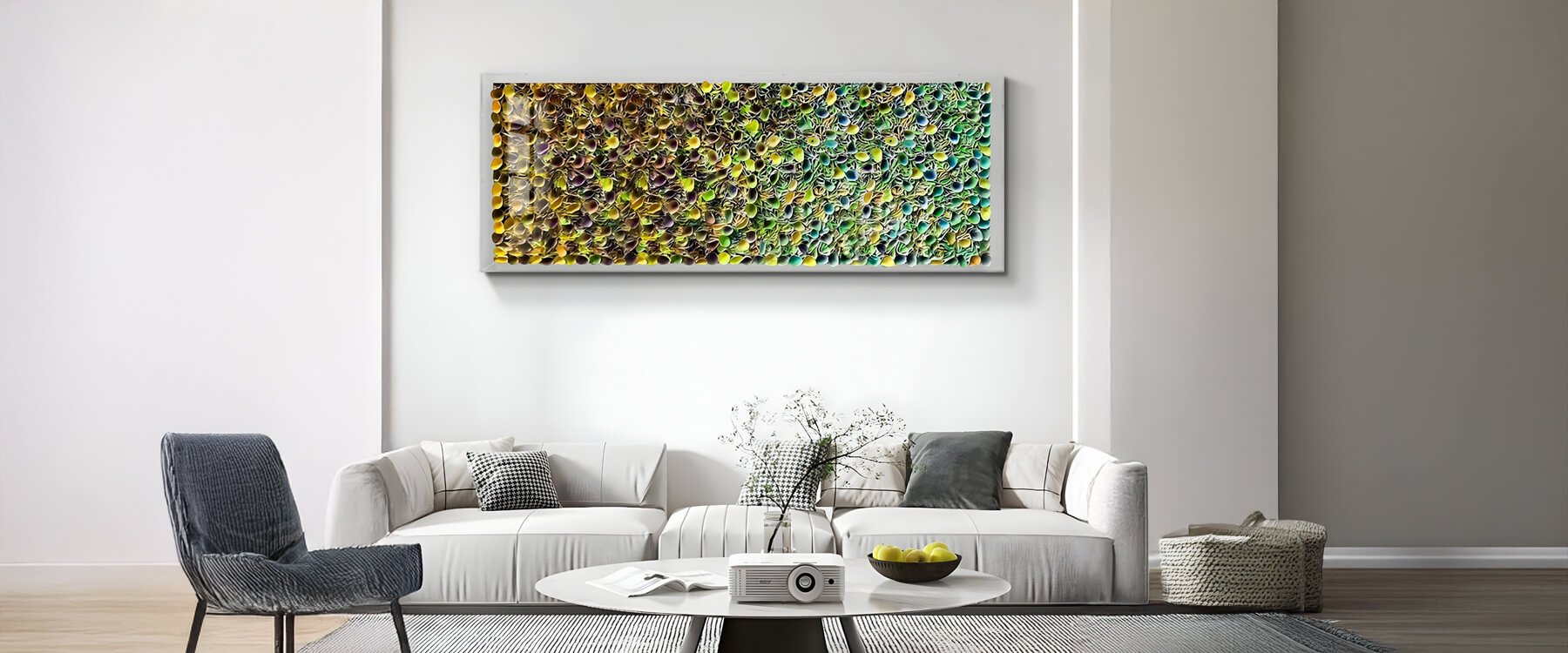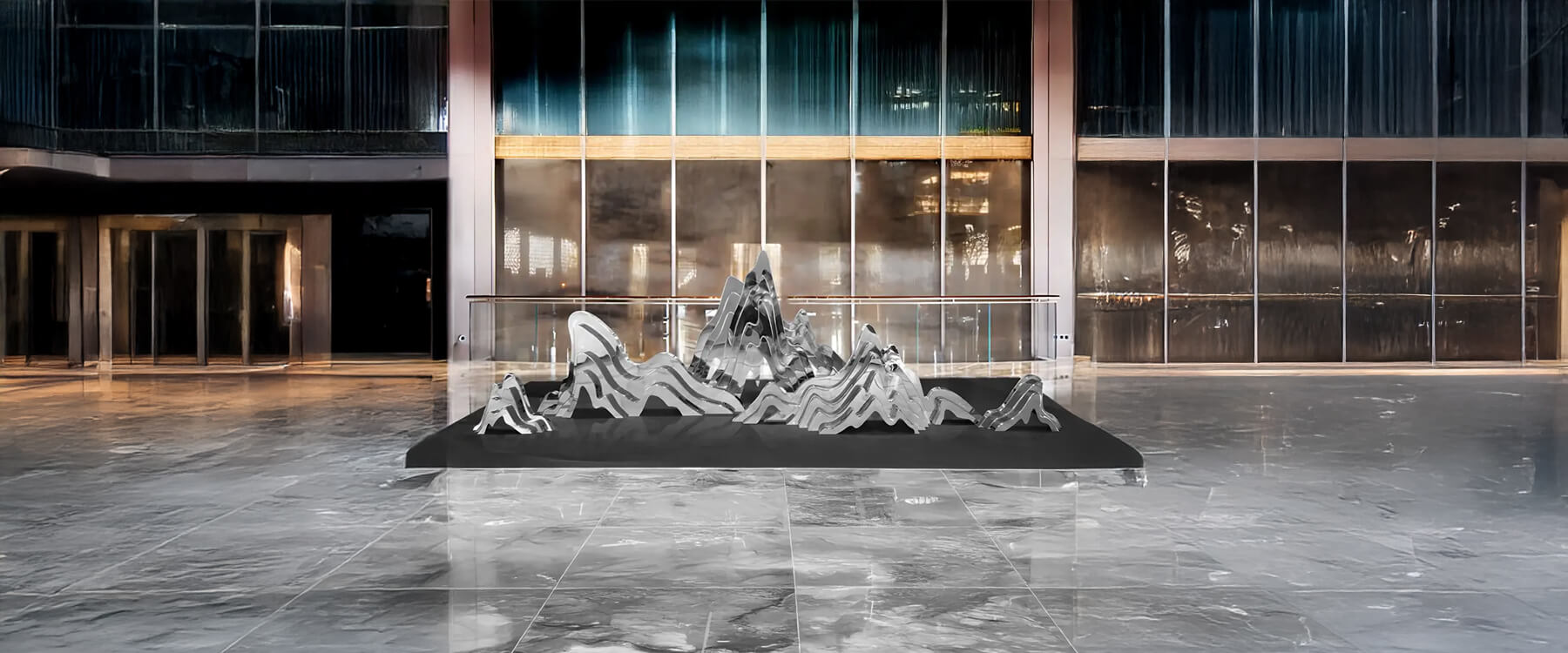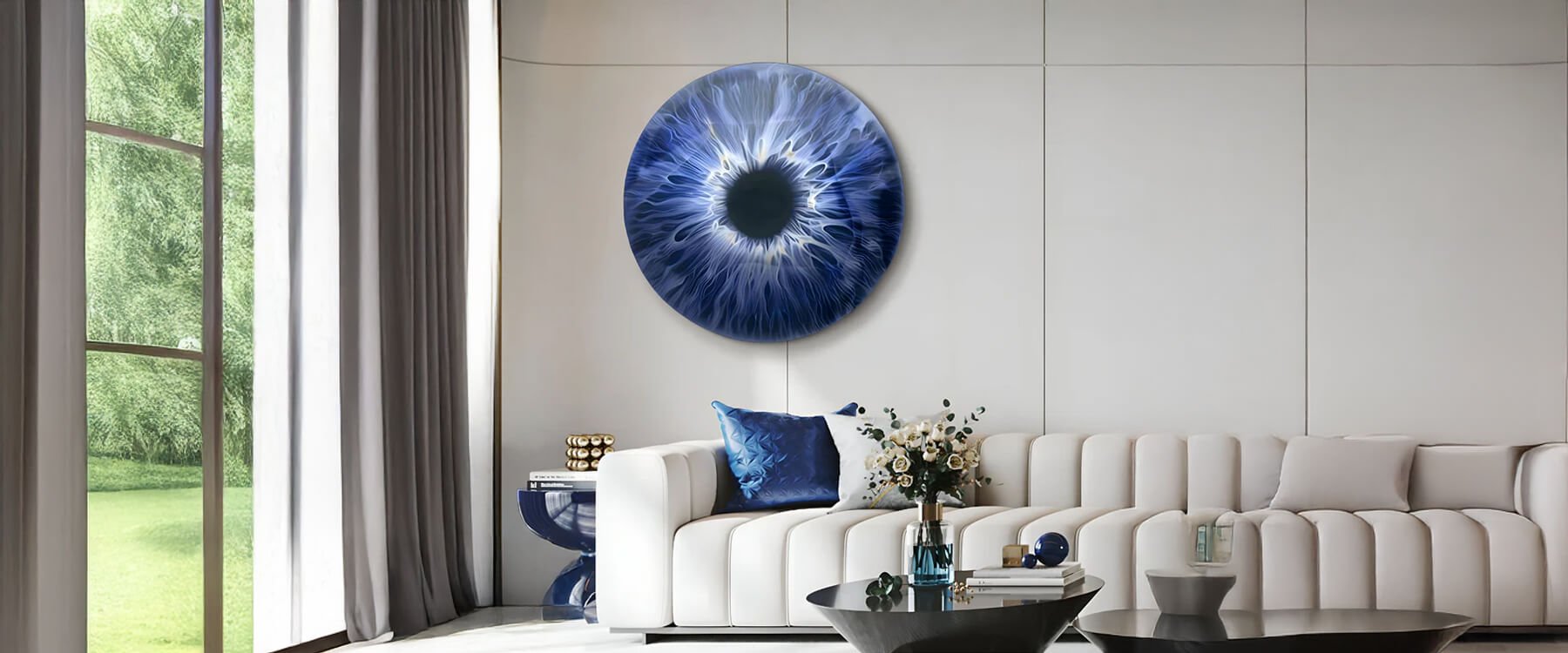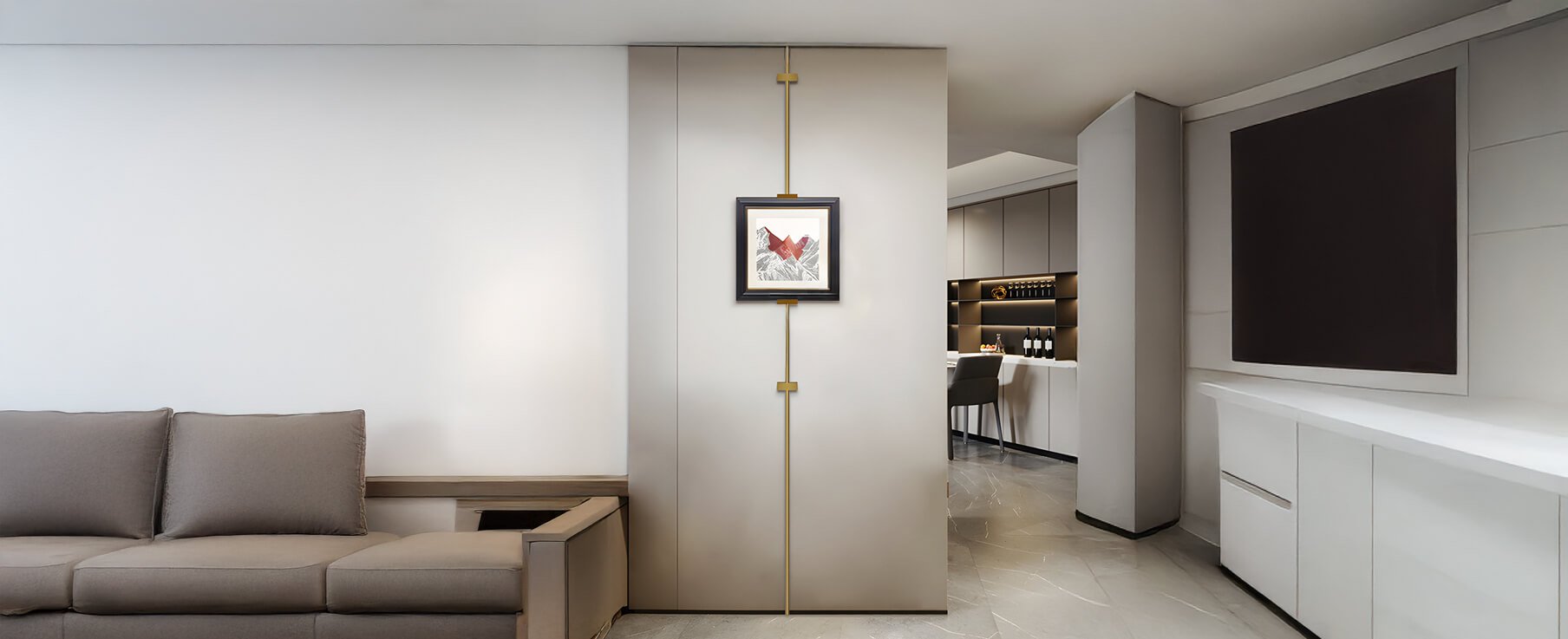Introduction
Selecting the right wall art for your living room can completely transform the space, adding character, warmth, and style. More than just a decorative element, the right piece of wall art can unify your furniture choices, tie together colour schemes, and introduce texture or contrast that elevates your overall décor. Wall art not only enhances the aesthetic appeal of a room but also serves as a reflection of your personality, tastes, and experiences. Furnishing a brand-new space or looking to refresh your existing interior, this ultimate guide will walk you through all the essential considerations for choosing the perfect living room art, ensuring your space feels both visually cohesive and truly inviting. From classic sculptures to 3D Art installations and modern art prints, there’s no shortage of creative ways to bring your walls to life.
Understanding Your Space
Before diving into the selection process, it’s important to understand the space you’re working with. The size, colour palette, and overall theme of the room play a significant role in determining the type of living room art that will complement the space. If you’re seeking extra visual impact, 3D Art can introduce depth and dimension in a way that flat prints cannot-making your living room stand out.
Size and Proportions
Start by evaluating the dimensions of your living room. A large wall can support a statement piece, such as a large canvas or a series of smaller framed pieces. In contrast, smaller spaces benefit from more modestly sized art, which avoids overwhelming the room. When considering the scale of your living room art, think about the size of your furniture. A piece that is too small can get lost in the space, while one that’s too large can feel out of place. In many modern homes, 3D Art can be particularly effective when used sparingly in smaller areas, ensuring it remains a focal point without dominating the room.
Colour Palette and Theme
Living room art should seamlessly blend with the colour palette of the room. If your walls are neutral, you can experiment with bolder pieces, such as vibrant abstract art or nature-inspired prints. Conversely, if your space has a bold colour scheme, you may want to choose more subtle, neutral-toned artwork to balance the room. For those who love a contemporary twist, adding 3D Art that complements or contrasts your existing colour scheme can create a dramatic effect, tying the entire room together in a unique and memorable way.
Choosing art that complements existing furniture and decor is also key. If you have a modern living room with clean lines, modern Sculptures or minimalist prints might be the perfect fit. On the other hand, vintage pieces or classic Sculptures can bring warmth and character to a more traditional setting.
Different Styles of Living Room Art
The style of your living room art should match the mood you wish to create. Art has the power to set the tone of a room, no matter if you want it to feel serene, energetic, or cozy.
Modern Art
Modern art is a great choice for creating a clean, sophisticated look. Featuring bold lines, geometric shapes, and often a minimalist approach, modern art adds a contemporary flair to your living room. Popular forms of modern art include geometric sculptures, abstract paintings, and large canvas prints that are sure to become the centrepiece of the room.
Abstract Art
Abstract art can evoke a range of emotions and interpretations, making it a versatile choice for living room art. Whether your preference leans toward vibrant colours or more subdued tones, abstract pieces can add a dynamic feel to the space, especially in minimalist or modern settings. You can also incorporate geometric art motifs within abstract works for an extra layer of visual interest. These geometric patterns can range from bold, large-scale shapes to subtle, interwoven lines that offer a more understated approach.
Nature-Inspired Art
Nature-inspired living room art, such as landscapes, botanical prints, or wildlife photography, brings an element of tranquillity into the space. It’s ideal for creating a calming atmosphere, particularly in rooms that are meant for relaxation and leisure. If you’d like to contrast the organic feel of nature art, consider pairing it with small accents of geometric art, such as a minimalist print or sculpture with clean lines-this juxtaposition can add depth and a contemporary twist to an otherwise earthy look.
Vintage and Retro Art
Vintage pieces can add a sense of history and nostalgia to your living room. Regardless of whether it’s a vintage travel poster or classic mid-century modern artwork, these pieces inject personality into the room, evoking a timeless charm. If you’re drawn to retro aesthetics, you might also explore mid-century geometric art, which often features distinctive shapes and repetitive patterns reminiscent of the era, further enhancing that nostalgic vibe.
Minimalist Art
For a clean, streamlined look, minimalist art is a fantastic option. Characterized by simple forms, neutral colours, and sparse designs, minimalist pieces can help create a peaceful, uncluttered environment. These works often emphasize space and light, allowing other elements of the room to shine. A popular choice in minimalist spaces is geometric art, focusing on fundamental shapes that underscore the purity and simplicity at the heart of minimalism.
Choosing the Right Size and Scale
Selecting the right size for your living room art is crucial to ensure it enhances the room rather than overwhelming or underwhelming it. Here are a few tips to help you choose the right scale:
- Large Walls: For expansive walls, opt for large statement pieces, such as oversized paintings or a series of smaller pieces that form a cohesive look.
- Above the Sofa: The artwork above the sofa should be approximately two-thirds the width of the furniture. This ensures that the piece doesn’t dominate the room, but still provides visual balance.
- Smaller Spaces: In a small living room, go for smaller or more compact pieces to avoid overwhelming the space. A collection of smaller artworks arranged together can create a gallery wall that adds personality without crowding the room.
Material and Framing Options
The material and framing of your living room art can have a significant impact on its overall aesthetic. Here’s a breakdown of some common materials and their benefits:
- Canvas Art: Canvas is a popular material for living room art, offering a textured finish that works well in modern and contemporary spaces. It's versatile and can be displayed unframed or framed, depending on the desired look.
- Wood and Metal: Wooden frames can add warmth and character, while metal frames often provide an industrial feel. Geometric Sculptures and 3D Art made of metal or wood are excellent choices for a more dynamic, modern touch, especially if you’re trying to incorporate more geometric art elements into your décor.
- Prints and Photographs: Prints can be a more affordable option for living room art, offering a wide range of styles and subjects. Photographs, whether they’re black-and-white portraits or vivid travel images, can also personalize your space.
When framing art, consider if a more traditional frame suits your space or if a modern frame might better complement the overall design. Floating frames and shadow boxes are also popular choices for contemporary art.
Using Wall Art as a Focal Point
One of the most effective ways to use living room art is as a focal point. A large statement piece, such as an oversized painting or a striking Modern Sculpture, can draw attention to a specific area of the room, like the wall above the sofa or the fireplace.
If you’re aiming to create a focal point, consider placing your chosen piece in a central location where it can be easily seen. Pair it with complementary furnishings and decor to create a balanced and cohesive look. A well-placed artwork can turn an ordinary wall into an extraordinary feature.
Combining Different Art Pieces
A gallery wall is a perfect way to incorporate multiple pieces of living room art into the space. When mixing different art pieces, it’s important to maintain balance and cohesion. Consider grouping artworks by theme, colour, or size to create a unified look. Varying the sizes of the frames adds visual interest, but try to maintain a sense of harmony in the arrangement.
Avoid overwhelming the space by overcrowding the walls. Less is often more when it comes to displaying art. Leave enough room between pieces to let each artwork breathe and stand out on its own.
Personalizing Your Living Room with Art
One of the best ways to make your living room feel truly your own is by incorporating personal elements into your wall art. Family photographs, travel-inspired prints, or custom-made pieces can all add a unique and personal touch.
Personalized art can be anything from a family portrait to an artwork created by a local artist. These pieces tell your story and bring a sense of intimacy and warmth to the space.
Tips for Budget-Friendly Wall Art
Wall art doesn’t have to be expensive to make an impact. Here are some budget-friendly ideas for decorating your living room:
- Printable Art: Many online platforms offer high-quality downloadable art prints. You can print and frame them at a fraction of the cost of original artwork.
- Thrift Store Finds: Visit local thrift stores or flea markets for affordable, one-of-a-kind pieces. Vintage paintings and framed prints can often be found at bargain prices.
- DIY Projects: Get creative and make your own art. Whether it’s abstract painting, photography, or crafts, DIY art can add a personal and affordable touch to your living room.
Maintaining and Caring for Living Room Art
To ensure your living room art stays in pristine condition, proper maintenance is essential. Here are a few tips:
- Cleaning: Dust your art regularly using a soft, dry cloth to prevent dirt from accumulating on the surface. Avoid using harsh chemicals that can damage the art.
- Protecting from Sunlight: Direct sunlight can cause fading and deterioration over time. Place artwork away from windows or use UV-protective glass in frames to preserve colours.
- Storing Art: If you need to store art, ensure it is kept in a cool, dry place to avoid damage from humidity and temperature changes.
Wall Art Trends to Watch
Living room art trends are constantly evolving, and keeping an eye on the latest trends can help refresh your space. Here are some popular trends to consider:
- Eco-Friendly Art: Art made from sustainable materials or with eco-conscious production processes is growing in popularity. Look for pieces made from recycled materials or nature-inspired themes.
- Bold Colour Schemes: Vibrant, colourful art is making a comeback. Whether it’s a bold abstract piece or a lively landscape, this trend adds energy to the room.
- Multi-Panel Art: Large, multi-panel art pieces that span multiple sections of the wall create a dramatic effect and make a bold statement.
Conclusion
Choosing the right living room art requires thoughtful consideration of your space, style, and personal preferences. It’s not just about filling an empty wall; it’s about selecting art that resonates with your lifestyle and complements the ambiance you wish to create. By following these tips, you can find the perfect wall art to elevate your living room, transforming it into a place that’s both stylish and meaningful-a space that truly reflects who you are. Aiming for a modern aesthetic, a vintage charm, or a nature-inspired retreat, the right living room art can make all the difference in how you experience your home, setting the tone for comfort, creativity, and connection in one of your most cherished spaces.













































































